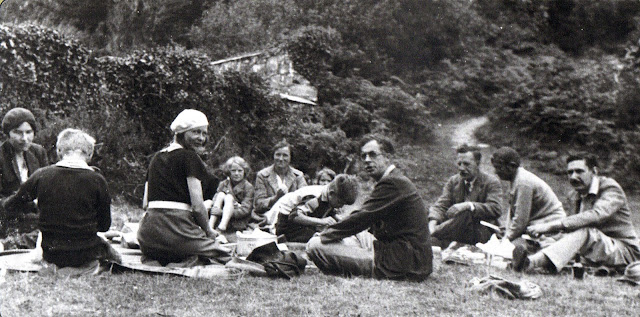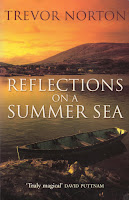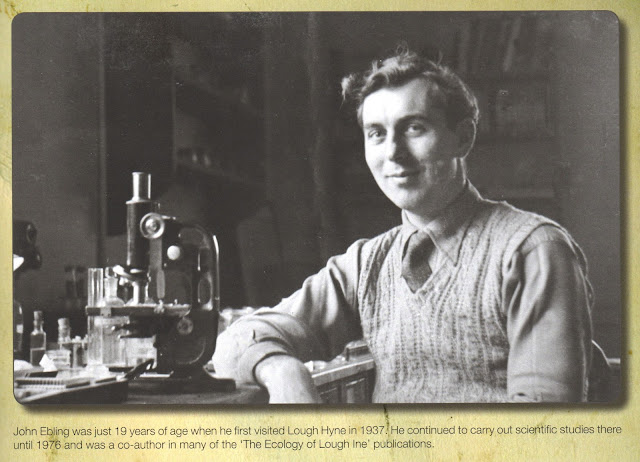The expedition spent five weeks on Komodo. Pretty sensational stories were published of encounters with feral water buffalo, poisonous snakes and of Mrs Burden coming between a dragon and its prey. So sensational that when Burden told his story to a Hollywood producer, the Komodo Dragon morphed into a giant ape, Mrs Burden into Fay Wray, and the whole tale into King Kong which hit the cinemas in 1933.
Burden wrote an article for National Geographic Magazine in 1927. The text is extremely short and that dealing with the Komodo part of their expedition even shorter. This is a photograph from that article:
Both Burden and Dunn produced more sober accounts of the expedition and of the Komodo Dragons that were encountered and collected dead and alive. Twelve were taken back dead, for the museum (a museum that never knowingly under-collected), where some can be seen today, and two alive for the Bronx Zoo in New York. The live ones reached New York alive but only just; one died soon after arrival, the other within two months. Long sea voyages at temperatures well below the preferred body temperature soon saw them off.
Five papers on the results of the expedition were written by Burden and Dunn; they appeared in American Museum Novitates. Two, one by Burden and one by Dunn, are concerned with the Komodo Dragon. Dunn’s paper concentrated on the size of males and females, together with the relationships of the various varanid species both extant and extinct. Burden covered such topics as how Dragons came to be be on the Komodo island group and Flores, their population, habitat, feeding and behaviour.
Burden led a number of collecting expeditions for the Museum and has been described as ‘geologist, naturalist, hunter, filmmaker and author’. Of particular note here is that he went on to be a co-founder, with Ilya Tolstoy (grandson of Leo), Cornelius Vanderbilt Whitney and Sherman Pratt of Marineland in 1938. Originally called Marine Studios and intended for underwater filming, it became the famous public aquarium reaching its zenith of popularity in the 1950s and 60s. Decades of decline followed and although re-launched on a much smaller scale, the original 1938 oceanarium has been demolished.
Dunn was a well-known herpetologist. He taught at Smith College, a liberal arts college for women, in Massachusetts from 1916 until 1928. He was awarded a Harvard PhD in 1921 for work done at the Museum of Comparative Zoology. A Guggenheim Fellowship after Smith College led to Haverford College in Pennsylvania; he became Professor of Biology in 1934. He was President of the American Society of Ichthyologists and Herpetologists in 1930-31.
The Eponym Dictionary of Reptiles* has a wonderful story about Dunn. During World War I he applied to become an officer in the U.S. army. He was rejected because his weekend pursuit of salamanders and snakes was considered ‘unbecoming in an officer and a gentleman’. He joined the U.S. Navy instead.
*Beolens B, Watkins M, Grayson M. 2011. The Eponym Dictionary of Reptiles. Baltimore: Johns Hopkins University Press.
Burden WD. 1927. Stalking the dragon lizard on the island of Komodo. National Geographic Magazine 52 (2, August 1927), 216-233
Burden WD. 1927. Dragon Lizards of Komodo. New York: Putnam
Burden WD. 1927. Results of the Douglas Burden Expedition to the island of Komodo. V.—Observations on the habits and distribution of Varanus komodoensis Ouwens. American Museum Novitates 316, 1-10
Dunn ER. 1927. Results of the Douglas Burden Expedition to the island of Komodo. 1.—Notes on Varanus komodoensis. American Museum Novitates 286, 1-10
Lutz D, Lutz JM. 1997. The Living Dragon. 2nd edition. Salem, Oregon: DIMI Press
There is a lot of information on Burden’s expedition and on Burden himself available. A simple Google search suffices but the sources here, here and here, in addition to those above, have proved particularly useful.























